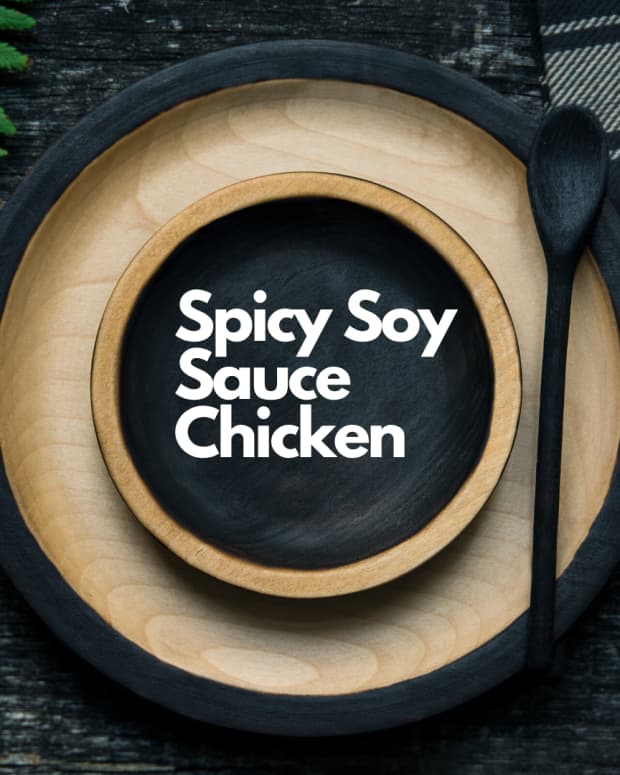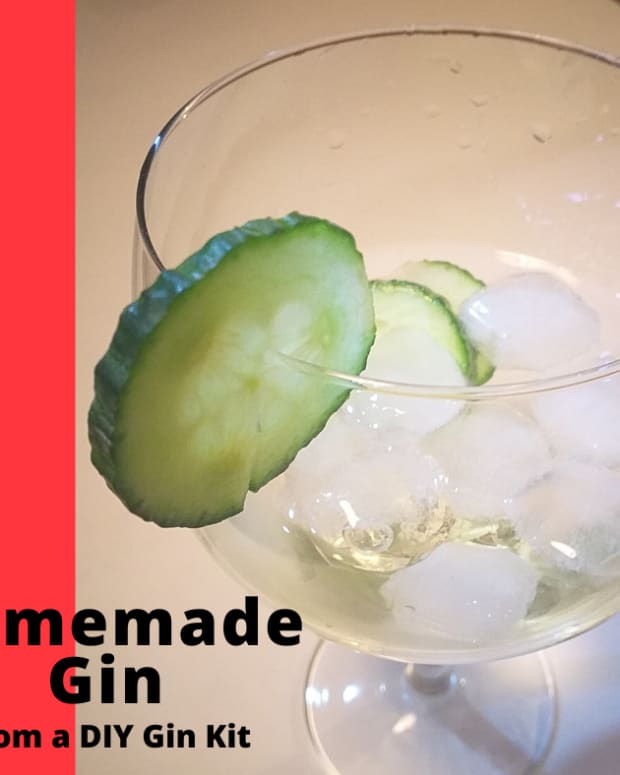9 Facts About Chinese Mooncakes: History, Culture, Legends
Ced earned a bachelor's degree in communication studies in 1999. His interests include history, traveling, and mythology.
Mooncakes: A Chinese Mid-Autumn Festival Treat
One of the most beloved traditional pastries in East and Southeast Asia, mooncakes are synonymous with the Chinese Mid-Autumn Festival, a holiday that falls on the full moon, i.e., the fifteenth day of the eighth lunar month. (In the Gregorian calendar, the date is typically in late September or early October.)
For the Chinese, this joyous festival is a time for family reunions, get-togethers with friends, and of course, feasting on mooncakes. Although you can still enjoy a mooncake outside of the festival or without any special knowledge, you'll appreciate this sweet delicacy all the more by knowing these nine fascinating facts.
1. Their History Goes Back 1000+ Years
The earliest mention of these traditional pastries, known as yue bing (月饼) in Chinese, dates to the Song Dynasty (960–1279). Mooncakes were notably mentioned in the Southern Song Dynasty Chronicle by Wu Zhimu (吴自牧).
Before this, though, the tradition of using baked cakes as an edible offering to lunar gods and goddesses long existed in the Middle Kingdom. During these earlier centuries, the pastry was referred to with other names such as yue tuan (月团) and xiao bing (小饼).
During the reign of Tang Dynasty Emperor Xizong (873–888), mooncakes were also gifted by the court to visiting scholars during the Mid-Autumn Festival. This practice likely inspired the pastry’s association with the festival.
But while the association may date to the Tang Dynasty, the widespread practice of making and eating mooncakes during the Mid-Autumn Festival only began during the Ming Dynasty (1368–1644). With several centuries between the Tang and Ming dynasties, one can theorize that the pastry started as an aristocratic pleasure before being embraced by the masses.

There are many regional variations of mooncakes. Clockwise from top left: Traditional, snow skin, a display featuring popular fillings, and chao shan.
2. There Are Many Regional Variations
The most commonly sold Chinese mooncake, sometimes referred to as the Cantonese style, is round, about four inches in diameter, and about one-and-a-half inches thick.
The top crust of Cantonese mooncakes usually features auspicious Chinese characters (e.g., "longevity" or "harmony") or the name of the manufacturer too. Fillings, in turn, consist of a dense paste made from lotus beans, sweet red beans, or jujube.
It is furthermore common for secondary ingredients to be included. For example, salted egg yolks, nuts, seeds, fruit pieces, or even savory ingredients such as dried ham.
Lastly, apart from the Cantonese version, many other regional variations exist, some of which look completely different. Here are a few popular types:
- Chao shan (Teochew) mooncakes: Flakey with a dome-like crust.
- Hong Kong "snow skin" mooncakes: Green crust instead of the traditional brown.
- Suzhou mooncakes: A completely savory (rather than sweet) filling.
3. They Are Linked to Chang’e, Goddess of Immortality
Famously, mooncakes are associated with Chang’e (嫦娥), the Chinese goddess of the moon and the symbol of the Mid-Autumn Festival.
There are several versions of the Chang’e myth, but in all, her husband was the legendary archer Hou Yi (后羿). i.e., the hero who shot down nine out of 10 suns to save the world from a scorching demise.
As a reward for his heroic deed, Hou Yi was given an elixir of immortality, which Chang’e subsequently ingested. In the most famous version of the story, it was said that she was forced to do so to prevent a thief from stealing the precious elixir.
Transfigured into an immortal, Chang’e then ascended to the Lunar Palace, forever separated from her husband. Heartbroken, Hou Yi subsequently placed Chang’e’s favorite cakes and fruits before the moon in memory of his wife.
Over time, this practice of offering food to the moon became associated with the Mid-Autumn Festival. In some extended versions of the myth, it’s also said that mooncakes were one of the original offerings used by Hou Yi. They were Chang’e’s favorite cakes.
A Very Different Chang'e Legend
A starkly different version of the legend claims that Hou Yi became tyrannical after saving the world. To prevent him from ruling forever, Chang’e ingested the elixir and fled. In this version, commoners are the ones who placed offerings before the moon, to thank Chang’e for her sacrifice.

Japanese-style mooncakes accompanied by rabbit-shaped pastries. The Mid-Autumn Festival is also celebrated in Japan.
4. They Are Associated With Rabbits
With reference to the above myth, one of Chang’e’s few companions in the Lunar Palace was the mythical Jade Rabbit.
Rabbits thus frequently appear as decorative motifs on mooncake boxes and containers. Some confectioneries even offer mini bite-size cakes in the shape of exquisite white rabbits. These, naturally, are a big hit with children.
5. They Symbolize Reunion
Beyond their religious and folkloric meanings, mooncakes represent family reunions and happiness in Chinese culture. This symbolism originates from the tradition of Chinese families gathering to celebrate the Mid-Autumn festival together.
Jump forth to modern times, the gifting of mooncakes during the eighth lunar month (the month of the Mid-Autumn Festival) is an important tradition for businesses across China and East Asia. For such businesses, the act symbolizes the reinforcement of partnerships. It is not uncommon for some companies to set aside significant budgets each year for such gifts.
6. Mooncakes Were an Instrument of Revolution
According to legend, mooncakes were instrumental in overthrowing the Mongolian Yuan Dynasty.
So the story goes, Zhu Yuanzhang, the founder of the subsequent Ming Dynasty, circulated a rumor that a frightening plague was spreading and that the only way to prevent infection was to eat a certain type of mooncake. Messages pinpointing the intended date of a planned national uprising were then hidden in the fillings. No surprise, the date set was the fifteenth day of the eighth lunar month; i.e., the Chinese Mid-Autumn Festival.
In another version of this tale, a secret message was encrypted into the auspicious characters on the cakes. As the pastry is typically given in boxes of four, the message was undetectable until a slice each from the four cakes was assembled.
Regardless of the veracity of these stories, they are widely accepted and embraced by the Chinese community. The tales also possibly explains the popularity of the pastry during the Ming Dynasty. For the commoners of that era, making and eating these cakes could have been a celebration of the revolution.
7. They're Not Exactly a Health Food
Because of their rich fillings, mooncakes are hardly the healthiest Chinese pastries around. The use of ingredients like lotus seed paste and salted egg yolks translates into significant levels of sugar and salt—with one mooncake containing anywhere between 700 and 1000 calories.
In modern Asian media, it is thus not uncommon for articles to explicitly remind readers each year not to over-indulge, for health's sake.
To make mooncakes slightly healthier, many modern Asian confectioneries have also reduced their use of sugar and salt. For example, less-sweet variants are increasingly marketed. The green snow skin variant is also known for being healthier, as it uses less oil.
In countries such as Singapore, healthier mooncakes can even receive government accreditation. This trend towards better nutrition is sure to continue in the future, as people around the world become increasingly aware of health consequences.
8. They Are Big Business
As mentioned above, the gifting of mooncakes during the eighth lunar month is an important social and business practice in China and elsewhere across Asia. As such, shopping malls in predominantly Chinese cities will always host mooncake fairs as the month approaches.
Hotels, restaurants, and confectioneries in these cities then compete intensely for a slice of the market during these fairs. Leading brands will often feature unique packaging and new flavors too.
In fact, the demand is so robust, and resilient, that even the 2020 COVID-19 pandemic was unable to stifle it; brands simply switched to online sales. As virtual fairs are much cheaper to host, compared to in-person exhibits, more mooncake businesses were able to enter the highly competitive market in 2020.
9. Avant-Garde Flavors Are Popping Up
Though still popular, traditional mooncakes are no longer the staple in today’s market. Because of intense competition and increasingly cosmopolitan tastes, confectioneries today frequently feature fillings and crusts that are amalgamations of Chinese and regional tastes.
For example, durian paste mooncakes are extremely popular in Singapore and Malaysia. Higher-end confectioneries throughout East Asia also showcase artisanal creations with elaborate decorations, these creations often commanding high prices.
In addition, non-traditional fillings are gaining popularity too. For example, fillings such as custard, chocolate, Japanese purple yam, Japanese mochi, and even truffle-flavored pastes.
Naturally, learning which new varieties are available each year is as entertaining as actually eating them. Lifestyle and F&B magazines also enthusiastically feature extensive lists of the best mooncakes to buy each year. These lists are always extremely popular with readers.
Further Reading
- Why Chinese People Eat Mooncake During the Mid-Autumn Festival
The Mid-Autumn Festival (also the Mooncake Festival or Lantern Festival) is considered to be one of the most significant festivals for Chinese people. - Mooncakes: China's Evolving Tradition - The Atlantic
Mooncakes are central to the centuries-old Mid-Autumn Festival. But the country's relationship with them is changing. - The Revolutionary History of Mooncakes : NPR
Mooncakes are known as an Asian pastry, but the cakes have a revolutionary history, and a current role in Hong Kong's pro-democracy movement. Bernice Chan of the South China Morning Post discusses.
© 2020 Ced Yong
Comments
Ced Yong (author) from Asia on September 13, 2020:
Hi Eric, thanks for reading. Curiously, most historical evidence suggests that the cakes and the festival were separate in earlier centuries, but gradually came together. I personally think a reason for this is because the harvest moon is typically clearest during the Chinese autumn.
Eric Dierker from Spring Valley, CA. U.S.A. on September 13, 2020:
Wonderful and I am now hungry for moon cake. Thank goodness we have them year round now instead of just Autumn. Our Vietnamese ones are called bánh trung thu. Meaning cake of Autumn. Is the cake made for the festivals or are the festivals made for the cake? hihihi






















